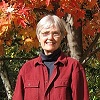
It’s 5am – or 4:50am or 5:11am – and I’m awake. I’m mostly awake because this is the time I typically get up, but I’m also awake because Mosey, our basset hound, typically wakes at this moment and is sharing his joy with me by licking my toes.
I then feed Mosey and Meander, our other hound dog. By then, the coffee is almost done, and I’ve built a fire in these  late spring mornings. I’ve packed my husband’s lunch and washed the few eggs we gathered late last night.
late spring mornings. I’ve packed my husband’s lunch and washed the few eggs we gathered late last night.
By 5:30, I am settled into my grandfather’s tufted leather chair and have my mother’s Bible in hand. A chapter from there. A daily read about fasting that I consider intellectually but not physically. A few prayers jotted into a notebook. Then, I lean back with as many chapters of my book of the morning – at this moment, it’s Christie Purifoy’s Roots and Sky – as time and the chill in the air will allow. These are my quiet moments, my centering moments. The only words that I let precede my own for today.
Here in the cold days, I work from our dining room table. (I’m eager to return to my office in what was the summer kitchen of this 200-year-old farmhouse, but that will call for days of sun that warm the walls.) By 6am, I open my laptop and quickly shut down all the browser tabs I forgot to close last night. I slip open MS word and begin.
I tap words ahead into the rising dawn. I do my best not to change anything, trusting that I’ll see better what needs revision when I have plotted the full path of the book. I resist – mostly – the urge to open one of those browser tabs. I keep going until I reach 1,000 words, the magic number Shawn Smucker suggested to me years ago. When I am in rhythm, this takes less than 20 minutes.
For all intents and purposes then, the most important work of my day is done when I get those 1,000 words finished. That’s not to say what I do for the rest of the day – the edits for clients, the manuscript reviews, the notes to communities I organize and writers I love – is unimportant. But for my mental health, for my clarity of mind, for my ability to speak with integrity about the writing life, those 1,000 words are my bedrock.
I have to say there’s another component of this urgency I have to do my personal creative writing first; it has to do with my identity as a Southern, Christian woman. All three of those aspects of my societal upbringing have taught me – through model and intention – to put myself last, to always do what is most important for others before what I do for myself. And while the central underpinning of those teachings – the lessons about selflessness and the need to avoid selfishness are important – many Southern, Christian women, myself included, have come to believe that we are as always to subjugate our calling, our health, our own needs to the wants of others. So when I do my writing first, I am establishing my own personhood as fundamental to the rest of the work I do. I am important, and those 1,000 words help me remember that.
When my 1,000 words are done, I feed our chickens, goats, cats, and Great Pyrenees and then come in to sit with my husband before he leaves for work. Once his truck pulls out of the quarter-mile drive, I’m back to the laptop – writing email missives to clients and crafting newsletters. Then, I edit or listen to client manuscripts for a few hours before taking a lunch break.
This lunch break thing is new for me. I don’t have colleagues to break with, and I don’t have an hours-per-week expectation set from a boss. Therefore, I don’t have boundaries coming from outside myself, and if I’m not careful, I feel pressured to do more every day. Thus, I never stopped for lunch, powering through until my husband came home and the animals needed another round of food. This continual 10 hours of work – 6am-4pm – not only made me cranky and exhausted, but it also made me frenzied and unable to quit work when the day needed to wind down. My belief that it had to all be done now made my chest ache, and I always felt like time was scarce. Somehow, a lunch break has changed all that.
So I eat lunch and watch a TV show on the DVR – Supernatural is my show of choice at the moment. Nothing like some vampire hunting and some pop religious questioning to give the mind a break.
Then, I go back to work for three or four hours until that truck with my beloved rolls back down the lane.
Feed everyone.
Feed ourselves.
Then, by 6pm, we’re back to something else. My husband is usually in his shop working on a car. Some  evenings I have to work, but I’m making that need more and more rare these days. Instead, I read or listen to podcasts if my energy is still high. As spring comes on, I’ll have garden chores to tend in these hours when the sunshine stretches himself.
evenings I have to work, but I’m making that need more and more rare these days. Instead, I read or listen to podcasts if my energy is still high. As spring comes on, I’ll have garden chores to tend in these hours when the sunshine stretches himself.
Some nights, I’m exhausted and just settle into my recliner – crochet nest nearby – to work on an afghan or stitch a hedgehog. On the days when I’m most tired –usually later in the week – I just watch TV, letting the stories get along without me just fine. (Since I’ve been a full-time editor and writer, I’ve found that I take great comfort – GREAT COMFORT – in the fact that movies and TV shows don’t need my help to get to a resolution. It’s a strange thing to find myself relieved that I don’t have to work out the story myself, and it’s a gift that lets my mind let go of sifting through word choices and point of view strategies. )
9pm means I’m in bed, blankets tucked up to my chin and a book at hand. I’m asleep by 9:30 unless that book is REALLY good . . . and sometime after, my husband and two hound dogs join me under the covers.
It’s not the life everyone would choose, but it’s mine, and it’s so, so good.
Incidentally, this essay is 1001 words. Got my word count in for today. ☺
About the Author: Andi Cumbo-Floyd
 Andi Cumbo-Floyd is a writer, editor, and farmer, who lives on 15 blissful acres at the edge of the Blue Ridge Mountains with her husband, 6 goats, 4 dogs, 4 cats, and 22 chickens. Her books include Steele Secrets, The Slaves Have Names, and Writing Day In and Day Out. You can connect with Andi at her website, andilit.com, or via Facebook and Twitter.
Andi Cumbo-Floyd is a writer, editor, and farmer, who lives on 15 blissful acres at the edge of the Blue Ridge Mountains with her husband, 6 goats, 4 dogs, 4 cats, and 22 chickens. Her books include Steele Secrets, The Slaves Have Names, and Writing Day In and Day Out. You can connect with Andi at her website, andilit.com, or via Facebook and Twitter.




 When this happens, I rely on my sacred essential oils to aide in lifting me out of one season and ushering me into the next. There are a couple of different ways I use the oils and I’d like to share them with you. But first, let me explain what essential oils are.
When this happens, I rely on my sacred essential oils to aide in lifting me out of one season and ushering me into the next. There are a couple of different ways I use the oils and I’d like to share them with you. But first, let me explain what essential oils are. because they remind me of summer and sunshine. Bergamot, lime, orange, and lemongrass have been my go to scents to diffuse at home and at work. It is said that citrus scents are energizing, uplifting, and they increase our mental awareness. Yes please! Because citrus fruit grows on trees, I feel like they pair well with a wood scent.
because they remind me of summer and sunshine. Bergamot, lime, orange, and lemongrass have been my go to scents to diffuse at home and at work. It is said that citrus scents are energizing, uplifting, and they increase our mental awareness. Yes please! Because citrus fruit grows on trees, I feel like they pair well with a wood scent. Bella Cirovic is a photographer and writer who lives with her husband and daughter in the suburbs outside of NYC. She writes on the subjects of self care, body love and nourishment, crystals, essential oils, and family life. Catch up with Bella at her blog:
Bella Cirovic is a photographer and writer who lives with her husband and daughter in the suburbs outside of NYC. She writes on the subjects of self care, body love and nourishment, crystals, essential oils, and family life. Catch up with Bella at her blog: 








 She wandered past the perimeter
She wandered past the perimeter Patricia Wellingham-Jones is a widely published former psychology researcher and writer/editor. She has a special interest in healing writing, with poems recently in The Widow’s Handbook (Kent State University Press). Chapbooks include Don’t Turn Away: poems about breast cancer, End-Cycle: poems about caregiving, Apple Blossoms at Eye Level, Voices on the Land and Hormone Stew.
Patricia Wellingham-Jones is a widely published former psychology researcher and writer/editor. She has a special interest in healing writing, with poems recently in The Widow’s Handbook (Kent State University Press). Chapbooks include Don’t Turn Away: poems about breast cancer, End-Cycle: poems about caregiving, Apple Blossoms at Eye Level, Voices on the Land and Hormone Stew.
 lush velvets all put possibilities in my head. Even the neat little packages of zippers, thread, bias tape, and buttons—arranged rainbow-like—delight me. I want to buy them all, but time and money won’t let me. So I work one project at a time.
lush velvets all put possibilities in my head. Even the neat little packages of zippers, thread, bias tape, and buttons—arranged rainbow-like—delight me. I want to buy them all, but time and money won’t let me. So I work one project at a time. I live in Raleigh, NC where I write, read, and watch birds. My stories have appeared in several magazines, most recently Every Writer’s Resource, Still Crazy and the Raleigh News and Observer. I am a Writer in Residence at the Weymouth Center. Get to know me better
I live in Raleigh, NC where I write, read, and watch birds. My stories have appeared in several magazines, most recently Every Writer’s Resource, Still Crazy and the Raleigh News and Observer. I am a Writer in Residence at the Weymouth Center. Get to know me better